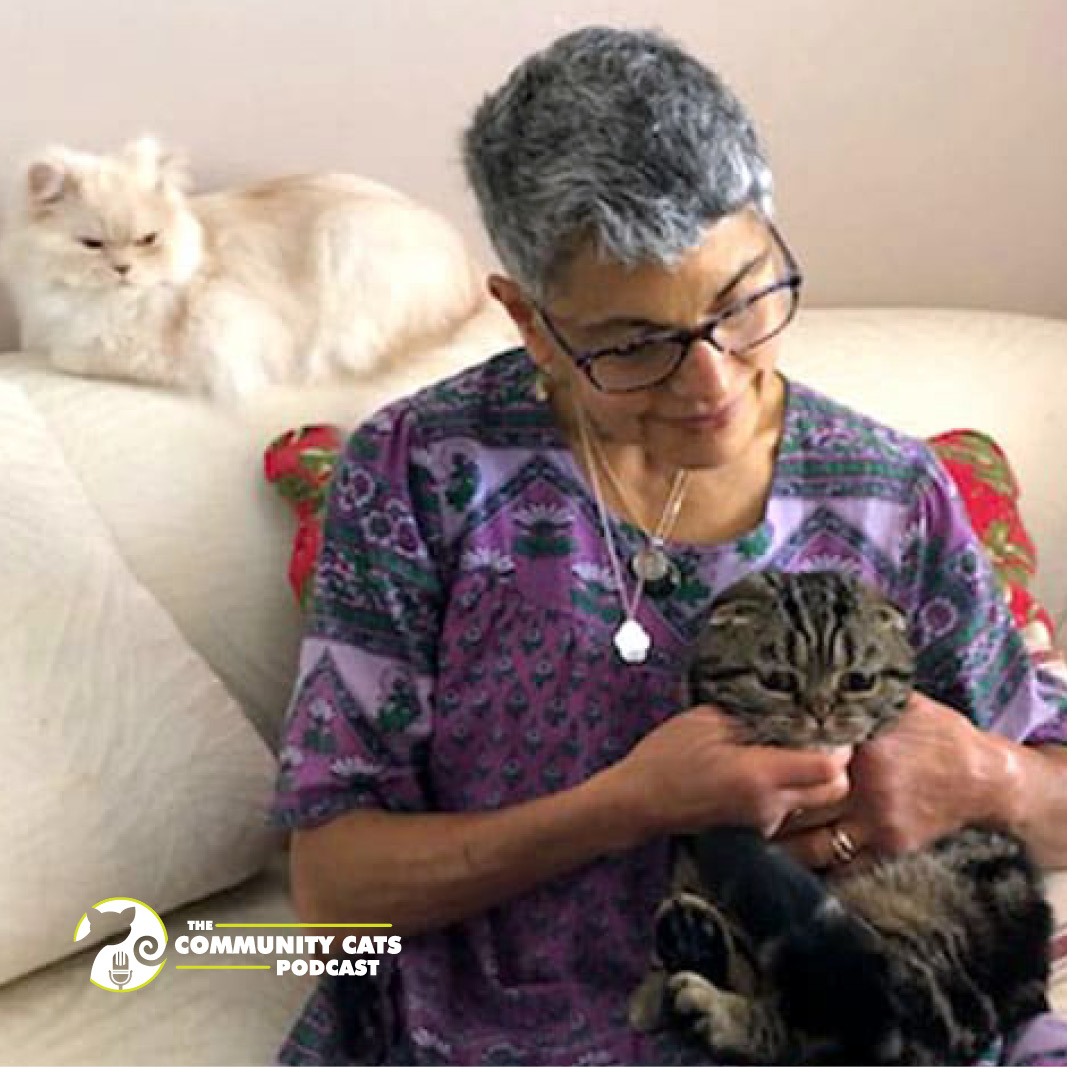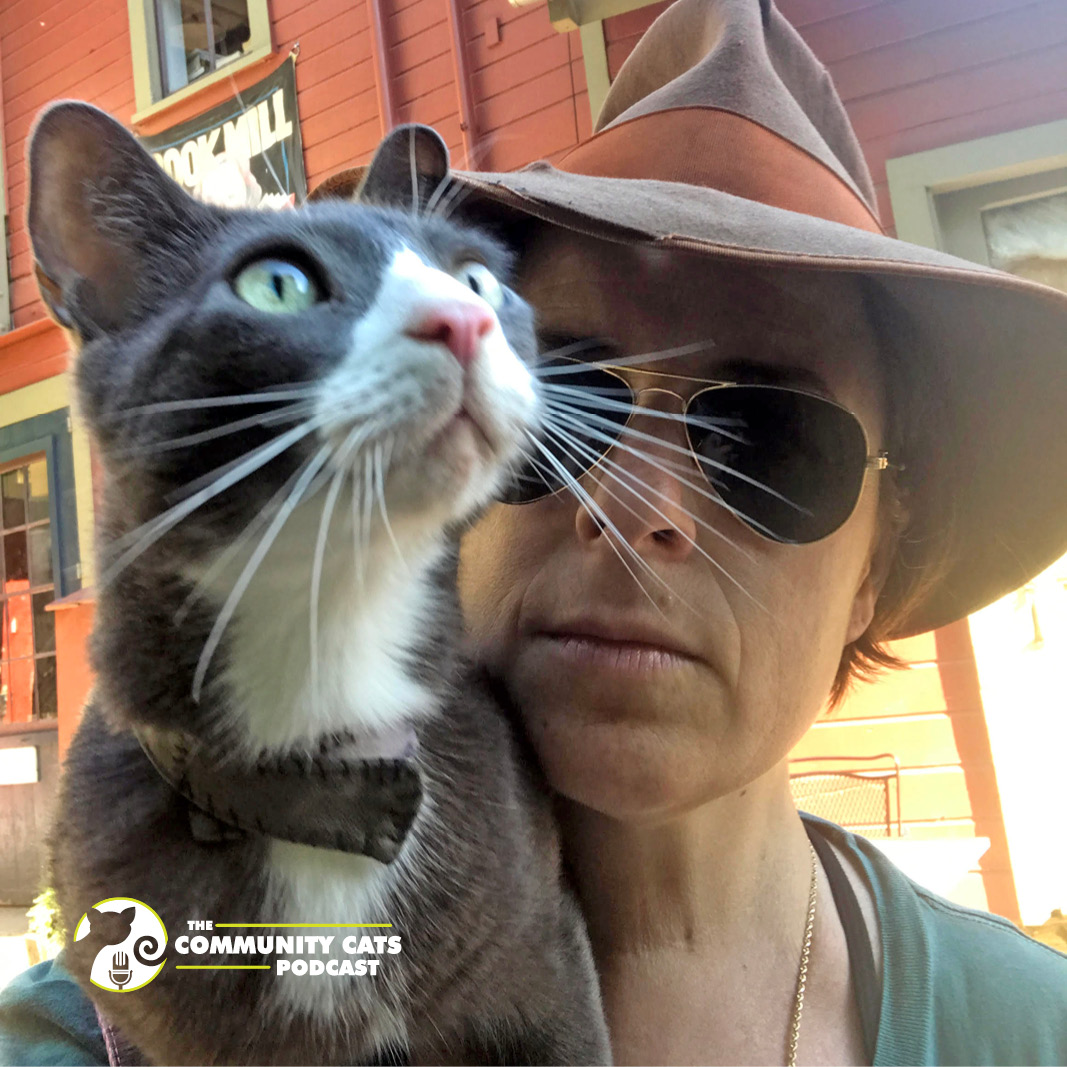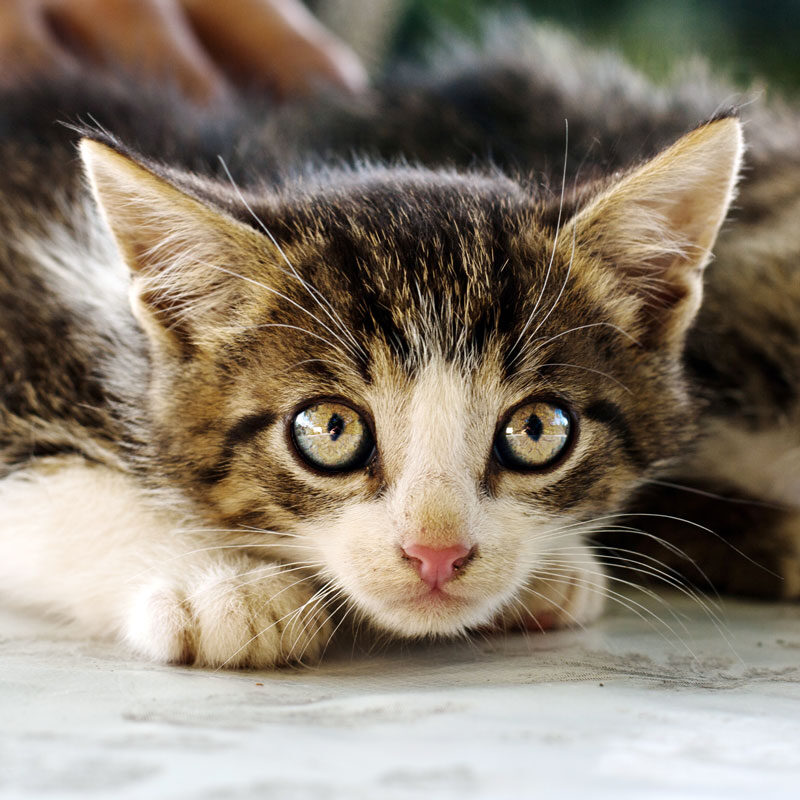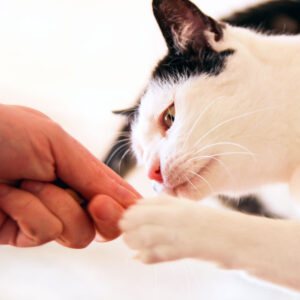
One Less Thing To Worry About with Janice Cobb, Founder of ZInzie Pie
October 18, 2022
Letting Gato Be Gato with Winter Miller, Author of Not a Cat
October 25, 2022
Contributed by Allison Hunter-Frederick, Cat Behavior Consultant, Trainer, & Educator at Allison Helps Cats
If you foster cats, you may be asked to socialize feral kittens. My husband and I first faced this challenge in 2020. I’ve also worked with fearful cats of all ages at our local shelter for the past few years. The following is based on what I’ve learned from both research and experience.
 According to the IAABC Journal, most literature on kitten socialization suggests that feral kittens older than eight weeks up to 6-8 months old can still be socialized and adopted, but they’ll need more time and attention than non-feral kittens. “Feral” refers to domesticated animals that have had minimal positive exposure to people.
According to the IAABC Journal, most literature on kitten socialization suggests that feral kittens older than eight weeks up to 6-8 months old can still be socialized and adopted, but they’ll need more time and attention than non-feral kittens. “Feral” refers to domesticated animals that have had minimal positive exposure to people.
Upon receiving a litter of feral kittens, they should be moved directly from the carrier to a small enclosed space—we used a soft-sided pet playpen—within a quiet room. This enclosed space should have enough room for a feeding station, litter box, scratching post, cat cave, and toys. By providing a quiet room you’ll avoid flooding, or exposing the kittens to negative stimulus until they shut down. This will allow the kittens to acclimate to their new environment with minimal stress, making it easier for you to work with them. Otherwise, if you simply give the kittens access to an entire room, they will find hiding places and disappear, which will make it difficult for you to work with them and gain their trust
Whenever possible, instead of forcing the kittens to accept you, you should desensitize them or expose them to you in small, careful steps. Initially, my husband and I took turns visiting the feral kittens so we wouldn’t overwhelm them. We also entered their room only long enough to feed them or change their litter. Gradually, we began making longer visits, all the while keeping them positive by offering slow blinks, sitting sideways, playing calm music, and limiting our interactions with them. I often worked on my laptop from a distance, moving a little closer each day, until I was eventually sitting right outside their playpen.
 You should also regularly use reinforcements or rewards, so the kittens come to view you as the bearer of good things. Initially, the way I rewarded our feral charges was to leave the room after they slow-blinked at me. This gave them control over when they interacted with me, making me less of a threat. With their survival no longer in danger, they were free to turn their attention to rewards such as treats, toys, and even attention. Always pick the reward to match the cat; try different treats, toys, and attention to determine which the cat prefers, then use that as its reward.
You should also regularly use reinforcements or rewards, so the kittens come to view you as the bearer of good things. Initially, the way I rewarded our feral charges was to leave the room after they slow-blinked at me. This gave them control over when they interacted with me, making me less of a threat. With their survival no longer in danger, they were free to turn their attention to rewards such as treats, toys, and even attention. Always pick the reward to match the cat; try different treats, toys, and attention to determine which the cat prefers, then use that as its reward.
Another important step is to provide a predictable routine. According to a study by Ohio State University, cats as a species thrive on structure. When it comes to ferals especially, having a set pattern that follows daily will help them feel more secure, thereby earning their trust. We did everything with our feral kittens on a firm schedule: we always fed them at the same time, interacted with them at the same time, and changed their litter at the same time. We also tried as much as possible to be consistent with how we interacted with them by using the same toys and the same training methods.
Up to this point, I haven’t said anything about petting feral kittens. I believe this is one of the last steps you’ll take as a foster cat parent, if you even take it. We didn’t attempt petting ours until the bravest of them was comfortable taking treats from my hand. I gradually began to get her to be comfortable with my other hand near her face. Once she was no longer bothered by my second hand, I started stroking her face. Initially, she allowed me to pet her for only a few seconds, but eventually I could pet her for a longer time. With our most scared feral, I had to rely instead on wand toys. I would dangle one inside the playpen and, as she played with it, she’d also rub against it. Eventually, I could switch out a wand toy for my hand.
The majority of the feral cats I’ve worked with, whether as fosters or within the shelter, have been placed into adoptive homes. If you have questions about how to do the latter I’d be happy to help. Also, I’d love to hear about your experiences fostering feral kittens. Please email me with questions or stories.
About Allison Hunter-Frederick

Allison Hunter-Frederick is a certified cat behavior consultant and trainer. She is also a mother of three furkids and several revolving foster cats, a host mom to an international student, and the wife of a supportive husband. Allison is a member of the International Association of Animal Behavior Consultants, Pet Professional Guild (including the PPG Cat Committee), and Best Friends Network Partners. Currently, she volunteers with The Capital Humane Society, The Cat House, Lincoln Animal Ambassadors, and Love on a Leash.




